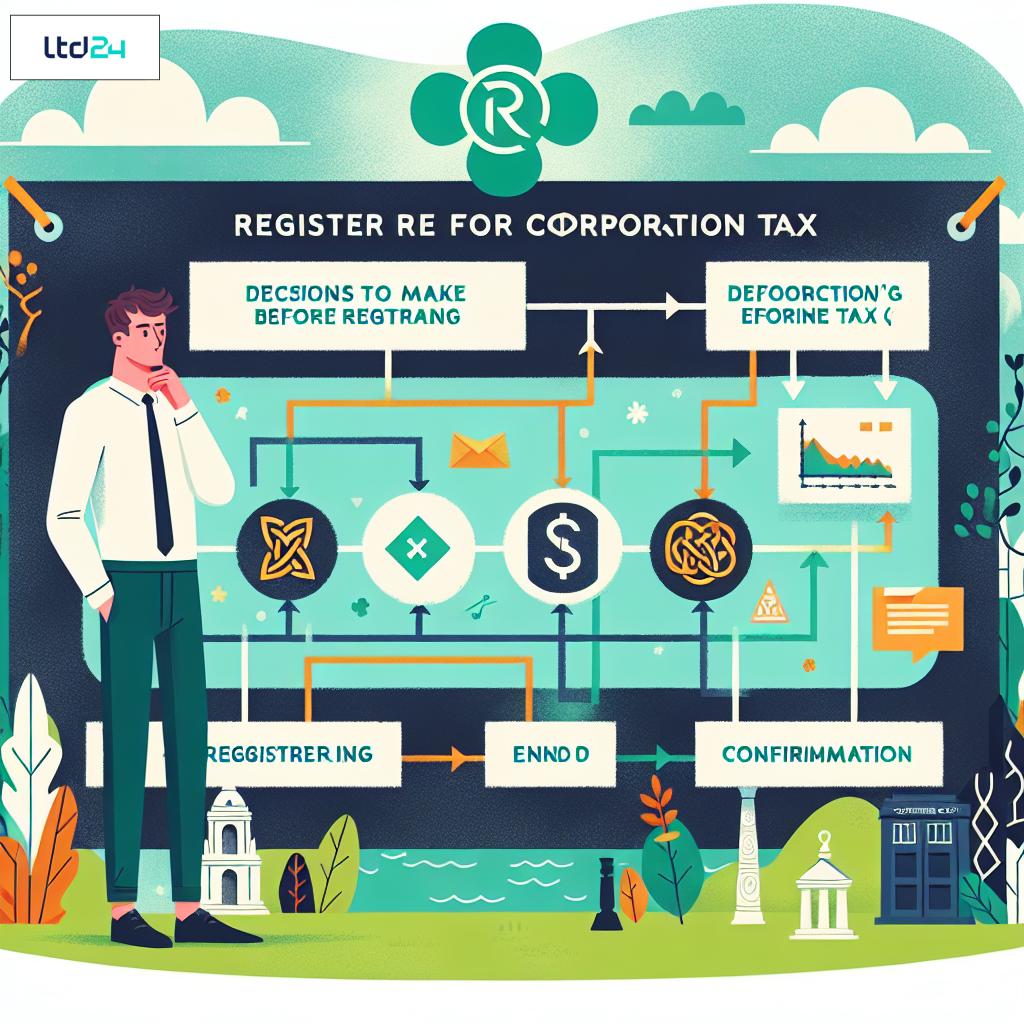Introduction: Understanding the Irish Corporate Tax Framework
Corporation tax represents a fundamental pillar of Ireland’s fiscal system, with stringent compliance requirements that necessitate meticulous attention from corporate entities. The Irish tax regime, administered by the Revenue Commissioners, imposes specific deadlines for filing corporation tax returns that vary based on a company’s accounting period. For businesses operating within the Irish jurisdiction, comprehending these temporal constraints is not merely a matter of regulatory adherence but a strategic imperative to avoid penalties, interest charges, and potential reputational damage. This comprehensive analysis examines the intricate deadlines associated with filing corporation tax returns in Ireland, elucidating the temporal parameters, procedural requirements, and consequences of non-compliance that corporate taxpayers must navigate in the Irish fiscal landscape.
The Basic Filing Timeline: Standard Deadlines Explained
The standard filing deadline for corporation tax returns in Ireland follows what is commonly referred to as the "9+9 rule." This stipulates that companies must submit their CT1 return (the primary corporation tax return form) within 9 months after the conclusion of their accounting period. For instance, if a company’s accounting period ends on December 31st, 2023, the corresponding CT1 return must be filed by September 30th, 2024. This 9-month timeframe represents the fundamental timeline around which corporate tax compliance in Ireland revolves. It’s worth noting that this deadline applies uniformly regardless of a company’s size, sector, or ownership structure, establishing a consistent compliance framework across the corporate spectrum. For international businesses with Irish subsidiaries, understanding this core deadline is essential for maintaining compliant operations within the jurisdiction.
Revenue Online Service (ROS): Electronic Filing Requirements
The Irish Revenue Commissioners mandate electronic submission of corporation tax returns through the Revenue Online Service (ROS) platform. This digital filing requirement has been in place since 2013, removing the option for paper submissions for virtually all companies. To facilitate this process, corporate taxpayers must register for ROS access, which necessitates obtaining a digital certificate through an authentication procedure. The ROS system operates on a 24/7 basis, allowing companies to file returns at any time before the deadline. However, prudent tax management practices recommend avoiding last-minute submissions, as technical difficulties or system congestion near deadline dates could potentially compromise timely filing. According to the Revenue’s official guidance, all corporate taxpayers with an annual turnover exceeding €8,300 must file their returns electronically, making ROS proficiency an essential aspect of corporate tax compliance in Ireland.
Preliminary Tax Payment Deadlines: The Two-Part System
Corporation tax in Ireland operates on a self-assessment basis, requiring companies to make preliminary tax payments before their final return filing. For small companies (those with a corporation tax liability below €200,000 in the preceding period), a single preliminary tax payment equal to 90% of the final liability for the current period or 100% of the liability for the preceding period must be made within the 11th month of the accounting period. Larger companies must adhere to a more complex two-part preliminary tax payment schedule. The first installment, amounting to 45% of the current year’s projected liability or 50% of the previous year’s liability, must be paid within the 6th month of the accounting period. The second payment, bringing the total preliminary tax to 90% of the current year’s liability, must be paid within the 11th month. This two-tiered system ensures regular tax inflow to the exchequer while maintaining flexibility for businesses with fluctuating profitability.
Extended Filing for iXBRL Financial Statements
While the CT1 return must be submitted within 9 months after the accounting period end, companies qualifying for the mandatory iXBRL (inline eXtensible Business Reporting Language) filing requirements are granted an additional 3 months to submit their detailed financial statements in this format. This extension recognizes the additional complexity involved in preparing standardized digital financial reports. However, it’s crucial to note that this extension applies exclusively to the iXBRL component and not to the primary CT1 return or tax payment obligations. Companies still must adhere to the standard 9-month deadline for their main return submission and tax payment. The iXBRL requirements apply to companies exceeding specific thresholds relating to turnover, balance sheet total, or employee numbers, as outlined by Revenue. For multinational corporations with international tax obligations, this extended timeline for iXBRL submission provides valuable additional preparation time for complex accounts.
Special Deadlines for Groups and Consortiums
Corporate groups and consortiums operating in Ireland face specific considerations regarding tax filing deadlines. Where Irish-resident companies form part of a group or consortium, they may be eligible for group relief provisions, allowing losses from one group member to offset profits in another. To facilitate these arrangements, all relevant group companies must ensure their returns are filed within the standard 9-month deadline to enable efficient loss utilization. Additionally, where companies wish to surrender or claim group relief, specific forms must be completed alongside the standard CT1 return. For multinational groups conducting transfer pricing activities, supplementary documentation requirements may apply, with specific submission deadlines that align with the corporation tax return filing date. These group-specific requirements add a layer of complexity to the standard filing timeline that multinational enterprises must carefully manage.
New Companies: First Return Deadlines
Newly incorporated companies in Ireland face distinct filing obligations for their inaugural tax returns. A new company must file its first corporation tax return within 9 months after the end of its first accounting period, which can be longer than 12 months (but not exceeding 18 months) from the date of incorporation. This extended first accounting period provides some flexibility for new businesses establishing their operations. Nevertheless, preliminary tax payment obligations still apply during this initial period. For companies incorporated with the intention of establishing an international business presence in Ireland, understanding these initial filing requirements is particularly important. The Revenue Commissioners typically issue a "Notice to File" to newly incorporated entities, but the obligation to file exists regardless of whether such a notice is received, placing the responsibility firmly on the company to understand and meet its compliance obligations.
Extension Requests: Criteria and Procedures
Under exceptional circumstances, the Revenue Commissioners may grant extensions to corporation tax return filing deadlines. These extensions are not awarded routinely but require substantiated grounds for consideration. Valid grounds for extension requests typically include severe technical difficulties with the ROS system (provided these are documented and reported promptly), catastrophic events affecting a company’s operations (such as natural disasters or major system failures), or the death or serious illness of key personnel responsible for tax compliance. To request an extension, companies must contact Revenue through their ROS account or via their assigned Revenue district, providing comprehensive documentation supporting their request. Extensions, when granted, are typically limited in duration and do not automatically extend payment deadlines. According to Revenue statistics, less than 5% of extension requests receive approval, underscoring the stringent criteria applied in evaluating such applications and the expectation of timely compliance in ordinary circumstances.
Consequences of Late Filing: Penalties and Surcharges
The ramifications of failing to meet corporation tax return filing deadlines in Ireland are substantial and multi-faceted. Late filing incurs a surcharge calculated as a percentage of the tax liability: 5% for returns filed within two months after the deadline (capped at €12,695), and 10% for returns filed more than two months late (capped at €63,485). Beyond these surcharges, late filing restricts the availability of certain reliefs, including loss relief and group relief provisions. Furthermore, companies with persistently late filings may be classified as "non-compliant" in Revenue’s risk assessment system, potentially triggering more frequent tax audits and scrutiny. For directors of companies, repeated failure to ensure timely filing could potentially lead to personal liability concerns and professional reputation damage. The financial and operational implications of non-compliance thus create compelling incentives for timely filing.
Accounting Period Modifications and Their Impact on Filing Deadlines
Changes to a company’s accounting period can significantly impact corporation tax return filing deadlines. When shortening an accounting period, the 9-month filing deadline applies from the end of the shortened period. Conversely, extending an accounting period (which requires Revenue approval and cannot result in a period exceeding 12 months) shifts the filing deadline accordingly. Companies must notify Revenue of any accounting period changes through an appropriate form submission. This notification should occur before the original filing deadline to ensure proper processing. For international businesses with multiple jurisdictional reporting requirements, aligning accounting periods across operations can streamline compliance processes but requires careful coordination of varied filing deadlines. The strategic adjustment of accounting periods represents a potential planning opportunity, but must be managed with strict attention to resulting compliance obligations.
Filing for Companies in Liquidation or Dissolution
Companies entering liquidation or voluntary dissolution processes remain subject to corporation tax filing requirements, albeit with modified deadlines. When a liquidator is appointed, the company’s accounting period ends immediately, triggering a filing obligation within 9 months. Subsequently, the liquidator must ensure returns are filed for each period during the liquidation process. For voluntary strike-offs, all outstanding returns must be submitted and taxes paid before Companies Registration Office (CRO) dissolution can proceed. Revenue will typically object to dissolution if compliance obligations remain outstanding. Companies contemplating dissolution through strike-off should therefore ensure all tax returns are current before initiating the process. For businesses with international corporate structures that include Irish entities, proper tax compliance during wind-down procedures is essential to avoid complications affecting the broader corporate group.
Non-Resident Companies with Irish Branches
Non-resident companies operating through Irish branches or agencies face equivalent corporation tax filing obligations to resident entities. These companies must file CT1 returns within 9 months of their accounting period end, declaring profits attributable to their Irish operations. The determination of attributable profits typically follows OECD principles regarding permanent establishment. Non-resident companies must register with Revenue upon commencing activities in Ireland, obtaining a tax reference number essential for compliance procedures. For companies providing directorship services or other corporate functions through Irish branches, understanding the scope of taxable activities is crucial for accurate return preparation. The dual tax considerations—in both Ireland and the company’s home jurisdiction—often necessitate specialized international tax expertise to manage compliance efficiently and avoid potential double taxation issues through appropriate treaty utilization.
Close Companies: Additional Reporting Requirements
Close companies—broadly defined as companies controlled by five or fewer participators or by any number of director-participators—face supplementary reporting requirements alongside standard corporation tax returns. These companies must include detailed schedules of certain expenses, loans to participators, and distributions within their CT1 submission. Additionally, surcharges may apply to undistributed investment and service income, calculated at 20% and 15% respectively. Close company status determination can be complex, particularly for companies with intricate ownership structures or international dimensions. The additional reporting requirements for close companies make their filing preparation typically more time-consuming, suggesting earlier preparation to meet the standard 9-month deadline. For private investment companies or family businesses operating in Ireland, close company provisions represent a significant compliance consideration requiring careful documentation practices.
Strategic Filing Date Selection for New Companies
New companies incorporating in Ireland have some flexibility in selecting their initial accounting date, which consequently affects their first filing deadline. This selection carries strategic implications for cash flow management and tax planning. By choosing an appropriate year-end, companies can optimize the timing of tax payments relative to their business cycle and revenue patterns. For instance, a company anticipating significant initial losses might benefit from a longer first accounting period (up to 18 months) to maximize the time before preliminary tax obligations commence. Conversely, companies expecting immediate profitability might prefer a shorter initial period to accelerate loss utilization opportunities. For businesses also establishing UK operations alongside their Irish entity, aligning accounting periods across jurisdictions can streamline compliance processes while potentially optimizing tax positions through careful planning of cross-border transactions.
Annual Return vs. Corporation Tax Return: Avoiding Confusion
A common point of confusion for companies operating in Ireland is the distinction between the Annual Return filed with the Companies Registration Office (CRO) and the Corporation Tax Return filed with Revenue. These are entirely separate compliance requirements with different deadlines and purposes. The Annual Return (Form B1) must be submitted to the CRO within 28 days of a company’s Annual Return Date, focused on corporate governance disclosures rather than taxation. In contrast, the Corporation Tax Return (Form CT1) follows the 9-month post-accounting-period deadline previously discussed. Companies must maintain distinct compliance tracking for these separate obligations, as penalties for non-compliance apply independently to each requirement. For international businesses with multiple corporate entities, implementing robust compliance calendaring systems that differentiate between tax and regulatory filing requirements across jurisdictions becomes essential for avoiding inadvertent non-compliance.
COVID-19 Impact on Corporation Tax Filing Deadlines
The COVID-19 pandemic prompted temporary modifications to Ireland’s corporation tax filing regime. During 2020-2021, Revenue implemented a compliance concession program, suspending surcharges for late filing provided returns were submitted within specific extended timeframes and taxpayers experienced pandemic-related difficulties. While these specific concessions have largely concluded, the experience established precedent for Revenue’s approach during exceptional circumstances. Companies facing continued pandemic-related challenges may still request individual consideration, though with increasingly stringent evidential requirements as business conditions normalize. This episode highlighted the importance of maintaining communication with Revenue when facing legitimate compliance difficulties, as proactive engagement typically yields more favorable outcomes than retroactive explanation. For businesses with international tax obligations across multiple jurisdictions, the varying pandemic response policies created significant compliance complexity requiring careful coordination.
Digital Compliance Tools and Deadline Management
The complexity of corporation tax filing deadlines has spurred development of sophisticated compliance management tools. These digital solutions incorporate deadline tracking, automated reminder systems, and integration with accounting software to streamline the return preparation process. Many professional service firms utilize dedicated tax compliance calendars that alert to approaching deadlines with sufficient lead time for preparation. For larger enterprises, enterprise resource planning systems often include tax modules with jurisdiction-specific deadline monitoring capabilities. Implementing robust digital compliance frameworks represents best practice for managing Irish corporation tax deadlines, particularly for companies with multiple group entities or complex structures. For businesses already utilizing accounting software for financial reporting, exploring tax compliance extensions or integrations can create efficiency gains while reducing deadline compliance risk.
Interaction Between Irish and International Filing Obligations
For multinational enterprises, Irish corporation tax filing deadlines exist within a broader matrix of international tax compliance obligations. Companies operating across multiple jurisdictions must coordinate their Irish filing calendar with requirements in other territories, particularly where intercompany transactions or financing arrangements create interdependencies in reporting. Country-by-Country Reporting (CbCR) requirements under BEPS Action 13 introduce additional filing obligations for qualifying multinational groups, with specific deadlines that may not align with standard corporation tax timeframes. Careful sequencing of compliance activities becomes essential, particularly where transfer pricing documentation or advance pricing agreements influence return positions. For companies with both UK and Irish operations, the different tax years (calendar year in Ireland versus April-March in the UK) create particular coordination challenges requiring specialized cross-border expertise.
Electronic Payment Requirements and Deadlines
Corporation tax payment deadlines operate in parallel with filing requirements but follow distinct rules. While returns must be submitted within 9 months after the accounting period end, the final payment for any balance of tax due must be made simultaneously with this filing. The Revenue Online Service (ROS) facilitates electronic payment through various methods including direct debit, credit/debit card transactions, and revenue credit transfers. Payments must be processed by the due date, with Revenue considering the payment date to be when funds are actually received rather than when instructions are given. This distinction is particularly relevant for international wire transfers, which may involve processing delays. For large company groups, mandatory electronic payment requirements apply regardless of turnover thresholds. The segregation of preliminary and final payment deadlines creates a structured cash flow pattern that companies should incorporate into their financial planning processes.
Professional Advisor Role in Deadline Compliance
The complexity of corporation tax deadlines and filing requirements in Ireland frequently necessitates engagement with professional advisors. Tax practitioners, accountants, and corporate service providers offer valuable expertise in navigating compliance obligations and ensuring deadlines are met. When selecting professional representation, companies should evaluate providers’ track records in timely compliance, their technical capabilities for electronic filing, and their knowledge of industry-specific considerations affecting tax positions. The agent-principal relationship establishes important delegations of authority, but ultimate responsibility for compliance remains with the company itself. For businesses considering outsourcing accounting services, establishing clear service level agreements regarding filing deadlines and responsibilities is essential for effective compliance management.
Planning for Future Reforms: Finance Act Changes
Ireland’s corporation tax framework undergoes regular evolution through annual Finance Acts and policy reforms. Recent and forthcoming changes affecting the filing regime include implementation of ATAD (Anti-Tax Avoidance Directive) measures, transfer pricing documentation requirements aligned with OECD standards, and potential reforms to the preliminary tax payment system. Companies must monitor pending legislative developments that may affect future filing obligations, particularly those with international implications such as the OECD Pillar Two global minimum tax initiatives. The implementation of Ireland’s Corporation Tax Roadmap signals continued refinement of compliance requirements, necessitating proactive adaptation strategies. For businesses establishing new operations in Ireland, building flexibility into compliance systems to accommodate regulatory evolution represents prudent planning. Engaging with industry bodies and professional advisors can provide early insights into potential reforms affecting filing requirements.
Conclusion: Proactive Deadline Management as Corporate Strategy
Effective management of corporation tax return filing deadlines in Ireland transcends mere regulatory compliance, representing a strategic business imperative with significant financial and operational implications. By understanding the intricate timeline requirements, implementing robust compliance systems, and proactively addressing potential complicating factors, companies can navigate the Irish tax landscape with confidence. The interconnected nature of filing deadlines, payment obligations, and supplementary reporting requirements creates a complex compliance ecosystem that rewards systematic approaches and forward planning. For businesses operating within the Irish jurisdiction—whether as domestic entities or international enterprises with Irish operations—mastering the temporal dimensions of corporate tax compliance establishes a foundation for broader tax governance excellence.
Expert Assistance for International Tax Challenges
Navigating the complexities of Irish corporation tax deadlines requires specialized knowledge and experience, particularly for businesses operating across multiple jurisdictions. If you’re seeking expert guidance on international tax compliance, we invite you to book a personalized consultation with our specialized team at LTD24.
As a boutique international tax consultancy, we offer advanced expertise in corporate law, tax risk management, asset protection, and international audits. We provide tailored solutions for entrepreneurs, professionals, and corporate groups operating on a global scale, helping them navigate complex cross-border tax obligations with confidence and precision.
Schedule a session with one of our experts now at $199 USD/hour and receive concrete answers to your tax and corporate inquiries that can help you maintain compliance while optimizing your international tax position. Book your consultation today.








